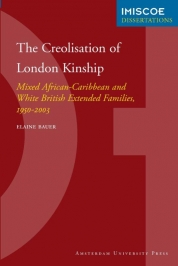The Guineas of West Virginia
Ohio State University
1952
139 pages
John P. Burnell, Jr.
A Thesis Presented in Partial Fulfillment of the Requirments for the Degree Master of Arts.
Table of Contents
Introduction
- Methodology
- Geographical and Social Setting
- History and Origin
- Who Is A Guinea?
- Social Participation
- Attitudes and Beliefs
- Summary and Conclusions
Bibliography
Map (See back folder)
Sociologists are becoming increasingly aware that there exists in the United States an “outcast element” the study of which has been neglected. This element is comprised of groups of people who are generally thought to be of tri-racial origin, that is, Negro, Indian and white. The whites tend to relegate these people to the status of Negroes, a status which most of them resent.
To mention but a few of these hybrid groups which have been reported on to date, there are those in parts of Tennessee and Kentucky referred to as “Melungeons“; in North Carolina, “Indiana of Robeson County” in the southern part of Ohio, “Carmel Indians”. Dr. Brewton Berry has applied the generic term “mestizos” to the racial hybrids of South Carolina, who are known there by various opprobrious names such as, “Brass Ankles”, “Red Legs”, “Buckheads”, and “Turks”. In Delaware the hybrids are known as “Moors” and “Hantichokes”; in Alabama, Louisiana, and parts of Mississippi, “Creoles” and “Cajuns“, and in Virginia, “Issues”.
The writer1s interest in the racial hybrid grew out of a general interest In race relations per se, and a firm conviction that only as these various, often socially and geographically isolated, groups are investigated and reported upon will the sociologist be in a position validly to generalize about them.
The purpose of this study was to observe and describe one of these groups, thereby contributing to the knowledge of racial hybrids which is being amassed. The group chosen for this purpose resides in the state of West Virginia, more specifically in the northeastern part of this state In Barbour and Taylor counties.
The people who constitute this group are generally considered by the white population as being a mixture of white, Negro, and Indian ancestry. Locally, they are referred to as “Guineas“, or “Guinea niggers”, both terms being of a derogatory nature. Although the Guineas are for the most part very white in appearance, as will be noted in a later chapter devoted to a description of their physical characteristics, the whites in the area resist accepting them as social equals largely on the basis that “one drop of Negro blood makes a Negro“. In spite of a substantial number of whites acknowledging “Indian blood”, and many more, not being quite certain as to what racial strains have gone into the make-up of these people, it seems to matter very little, for as one white Informant summed it up: “That one drop of nigger blood never washes away” The Guineas then, are referred to as “colored people.” In the areas where they reside and by virtue of this classification are subject to differential treatment by white society.
This particular group of people was chosen for study because: (1) they were conveniently located to the writer’s home; (2) the writer is a resident of the state in which they are located, and therefore it was felt that rapport could be more easily attained; and (3) only a modicum of information concerning these people Is to be found in the literature.
It must be pointed out from the very beginning that the primary object of going out into the field was to observe these people In their real life situation with a view toward describing that situation.
Lack of time and finances acted as definite limiting factors to the scope and comprehensiveness of the field work and largely contributed to limiting this study to a descriptive level. It is hoped, however, that a more extensive and comprehensive piece of work, free from such limitations, will soon be forthcoming. Moreover, it must be emphasized that the foregoing limitations, especially lack of finances, restricted most of the data gathered to Barbour County, even though many Guineas are to be found scattered throughout the southern part of Taylor County. To defray the expenses of the writer it was necessary for him to procure employment, and a position which permitted freedom of movement during daylight hours was found in Phillppi, the county seat of Barbour County thereby making this community a convenient center of operation. It was felt by the writer that the latter limitation was not as much a hindrance to the study as It may at first appear because: first, there seem to. be more Guineas, or at least more people who are defined by the local populace as “Guineas”, residing in Barbour than in Taylor county; and second, they are more concentrated within specific areas in Arbour county. Since several trips were made into Taylor county, some data which were gathered there pertaining to the Guineas has been utilized within the text. However, wherever any of these data appear, specific reference to Taylor county has been made.
It will be noted by the reader that the terms “white” and “Guinea” appear throughout the text. The writer uses the term “Guinea” as a means of identifying the people who are the aubject of this paper, but does not wish to convey the derogatory connotations generally associated with this term. In some cases the term “hybrid” is used interchangeably with Guinea. The term white applies to all of those people who are not considered either Negro or Guinea.
The methodology utilized in this study is explained in the following chapter…
Read the entire thesis here.

